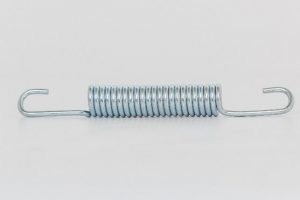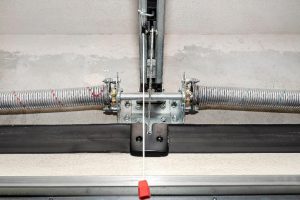Garage door spring replacement
When was the last time you thought about your garage door’s springs? Probably the February before never, right? Please don’t feel bad about it; it’s not the household item most people think about. Well, not until it breaks. And then there you are, stuck in your garage staring at a door that won’t open and wondering how the heck you will get to work on time. Here is what you need to know about garage door spring replacement.
While you’re scrambling to get to work, you might be tempted to just get the parts to do the job yourself. Save your time, money, and most importantly, the hazard to your body – do not try to replace the spring yourself. Getting a professional to do it for you correctly will not only get the job done quicker, not much more expensively, and far more safely, but it will also enable you to address the underlying problem which led you to be stuck in the garage in the first place – which may simply be that the spring currently installed is not the ideal model!
Is your garage door broken? In need of professional consultation?
Here is what you need to know about garage door springs
Garage door cables are the main part that lifts the heavy garage door to let you in and out easily. For some of you, it may look all the same, but actually, there are two main types of springs in use these days:
Extension springs
Extension springs are mounted on either side of the garage door track. They lengthen and contract with cables and pulleys when the garage door opens and closes. Extension springs come in various sizes, from 2 inches up to 16 inches in length, but one thing in common, all springs can bury the load of a garage door.

Extension Springs
Torsion spring
The springs are on a metal shaft above the door and have cable drums at both ends. Depending on the door size and weight, a garage door can have four torsion springs, but usually, it has a three-pronged support system with a center and two end bearing plates at either end.

Torsion Springs
How do the springs work?
Whatever springs are mounted on your garage door, the working method is the same. When you are closing the garage, and the door is lowered, the springs slowly gain tension, and the opposite happens when the garage door raises and opens again- the tension is released, and the springs help lift the load of the door back up.
As noted above, the garage door springs have the most tension when the garage door is closed; therefore, the springs are most likely to break down under the tension in the closed position. The tension builds up while the door closes, and as noted above, that’s when it’s most likely for the springs to break, that way, you should never stand under a closing garage door.
So why do garage door springs break down?
Unfortunately, mechanical parts don’t last forever, and garage door springs are no exception. The two main reasons for the failure of garage door springs are wear and rust.
- Wear – let’s start from the good part, if your garage door spring break due to wear and age, most likely it did its job and broke down due to natural causes. Wear/ age is the most common reason for garage door spring breakdown. The average life expectancy of a garage door spring, Torsion, or Extension is around 10,000 cycles. In other words, if you open the garage door only once a day to get to work, the spring should last up to 13 years. If you use the garage door 6 times a day, simply using the garage door as the main entrees, you’ll be looking at a lifespan of 4 years.
- Rust – as we spoke above, the typical lifespan for garage door springs is 10,000 cycles in optimal condition. One of the main reasons for shorter life expenses is rust. Because garage door springs are made from metal, over time, it builds up rust and corrosion, and while the spring operates with rust and corrosion, the friction increases, which eats up the spring.
Is your garage door broken? In need of professional consultation?
Who can you take care of your garage door springs?
You can apply lubrication on the springs; this day, you can find special lubrication for garage door springs in any home improvement store; simply follow the instructions written on the bottle.
If you detect rust on the spring, you can spray some WD-40 directly on the springs, let it settle for a minute, and then burs the rust off. Don’t forget to re-apply lubrication after scrubbing off the rust.
One thing to be aware, if you are not sure about the process or just don’t want to get into it, that’s fine; you don’t have to! Simply call your local garage door specialist, and he will take care of it. Better safe than sorry.
If you detect that the springs are broken, don’t try to repair them yourself, not because you are not talented, but because of the danger and harm it can cause you. Spring is in constant tension, meaning the wrong move and they can fly off in great force, enough people got heart, we don’t want you to be one of them. Call a garage door specialist, and they will know exactly what to do.
Call us now at 247 Life Time Garage Doors in Ohio, and our team of professional garage door technicians will serve you quickly and to your satisfaction.

